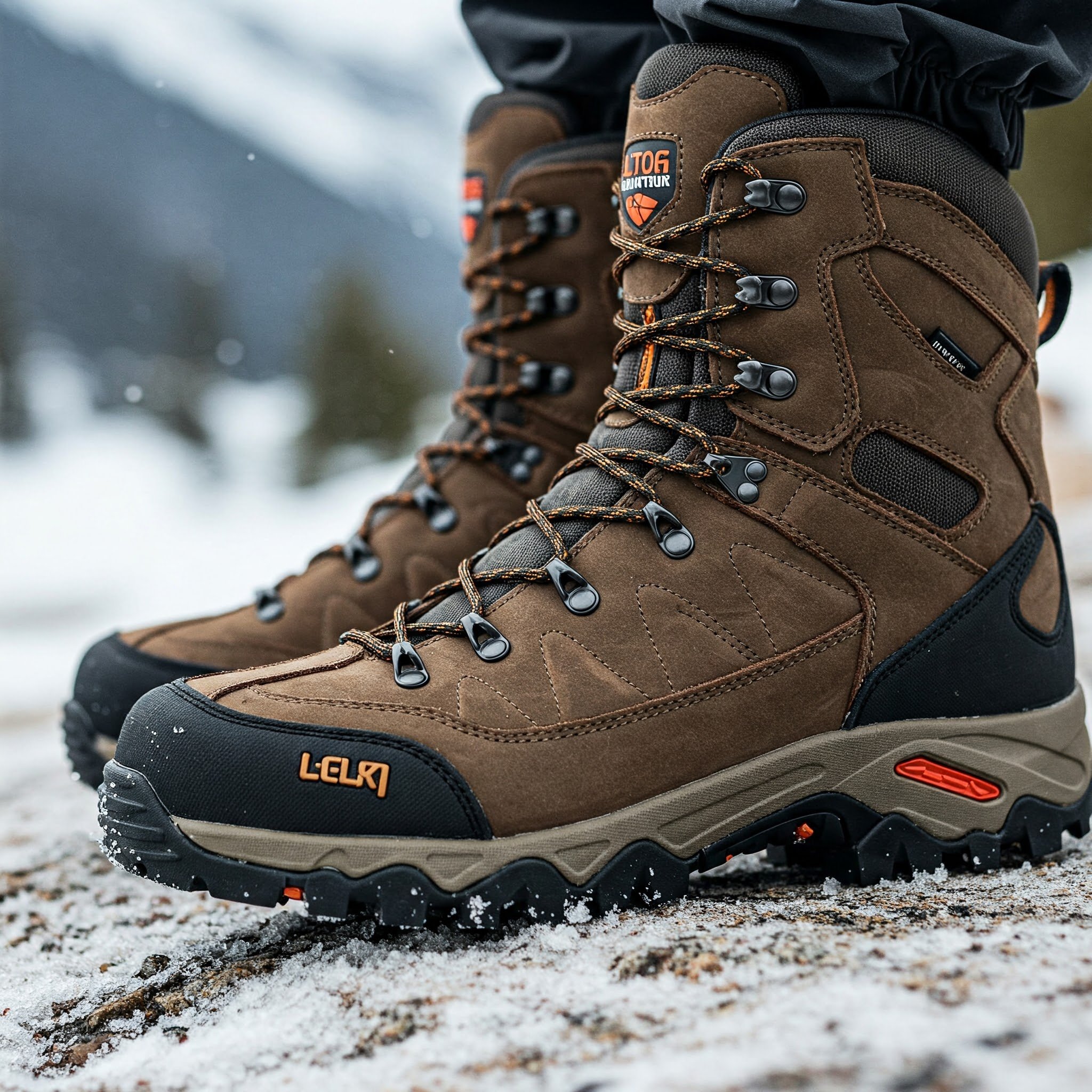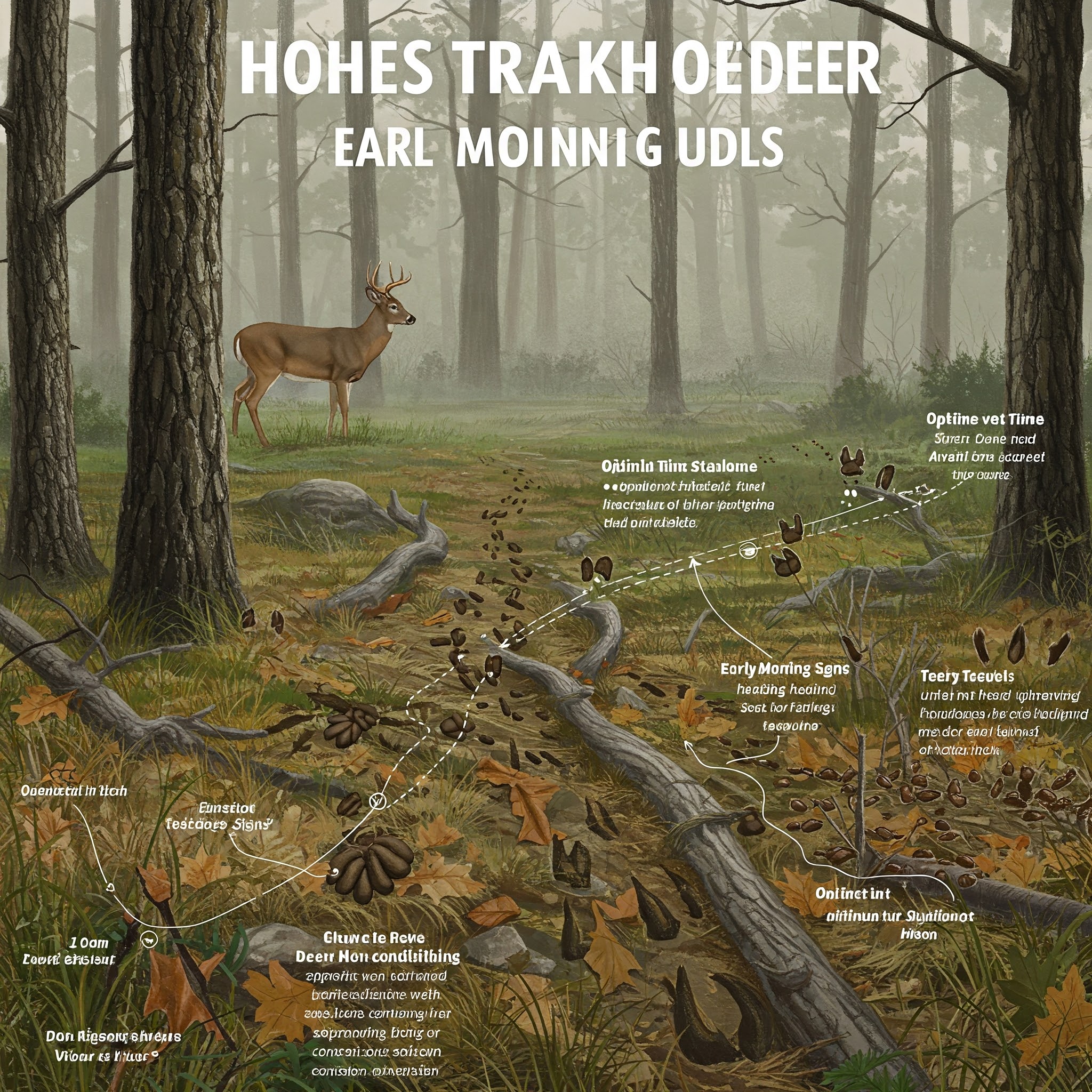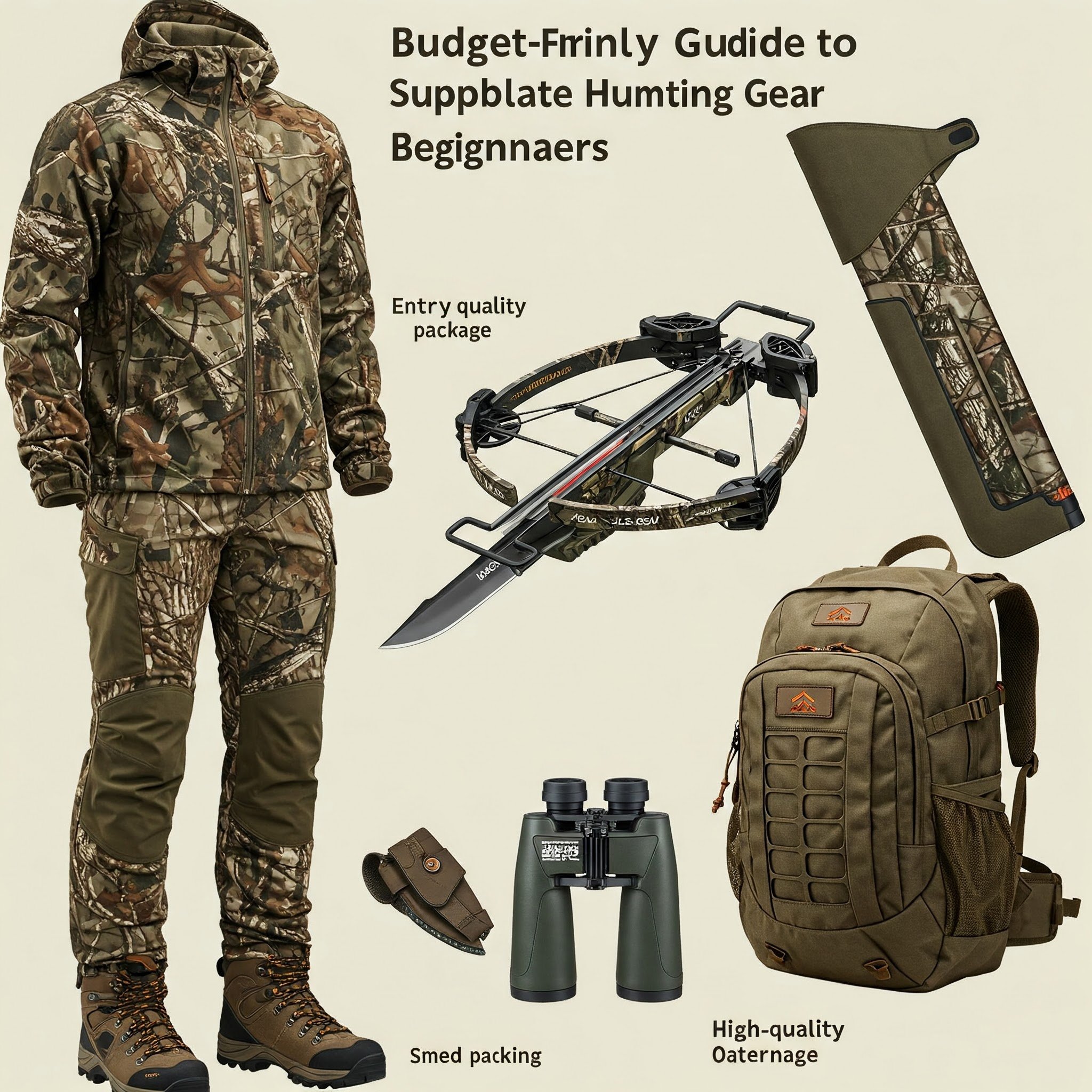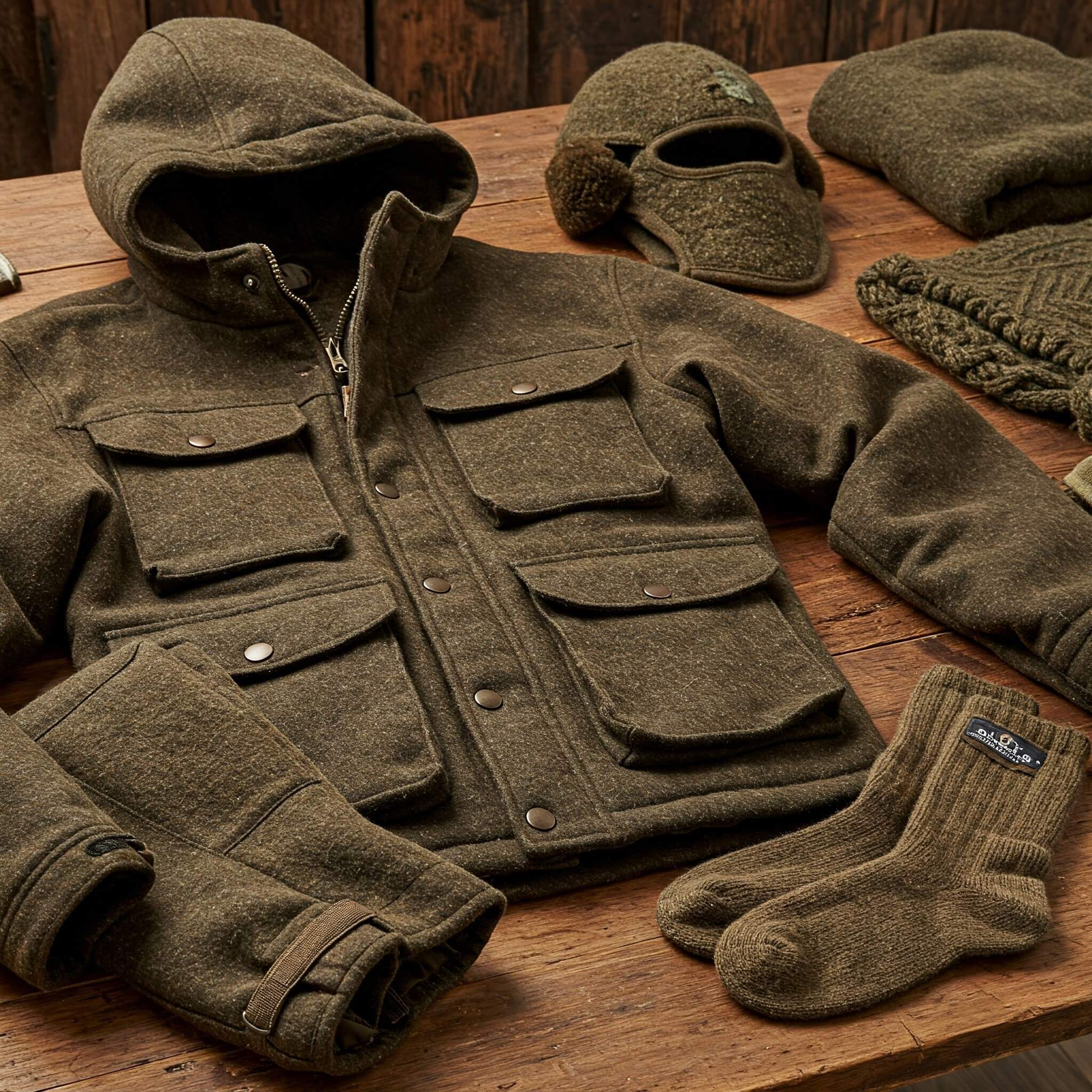Cold weather hunting is an experience like no other. The cold air, the silent snow-covered trails, and the excitement of following game make it a memory to last a lifetime. But there's nothing that can ruin a hunt quicker than cold, soaked feet. That's where the best cold weather hunting boots for hiking save the day. These boots are your initial line of defense against freezing temperatures, slippery trails, and rough terrain. In this definitive 3,000-word guide, we will discuss everything you should know about selecting the best hunting boots for cold weather hiking, from essentials to top picks, care tips, and expert advice to keep you comfortable and safe.
Why the Best Hunting Boots for Cold Weather Hiking Matter
Cold weather hunting isn't just about ability—it's about being prepared. When the temperature goes down, your equipment has to get tougher, particularly your boots. Day-hiking boots may be adequate for a warm day on the trail, but they don't stand a chance against snow, ice, or below-freezing gusts. The ideal cold weather hiking hunting boots are designed to take on these conditions, providing warmth, water resistance, and grip to keep you on the move.
Without good boots, you invite frostbite, blisters, or slips that will turn an excellent hunt into a scary adventure. Your feet are your anchor, trekking you across miles of rough terrain. A good investment in the top hunting boots for cold weather trekking keeps you fixated on the hunt, not your cold toes. Let's get into what sets these boots apart and picking the right pair.
Must-Have Features of the Best Hunting Boots for Cold Weather Hiking
Not all boots are designed for the rigors of cold weather hunting. To get the best hunting boots for cold weather hiking, you must look for certain features that guarantee warmth, durability, and performance. Here's a closer examination of what to look out for:
1. Insulation for Maximum Warmth
When you’re hunting in freezing conditions, insulation is non-negotiable. The best hunting boots for cold weather hiking use high-quality insulation, measured in grams, to trap heat and keep your feet warm. For mild cold (20-30°F), 200-400 grams of insulation is sufficient. For extreme cold (below 0°F), look for 800-1200 grams. Popular insulation materials like Thinsulate and PrimaLoft are lightweight yet highly effective, ensuring your boots stay warm without feeling bulky.
2. Waterproofing and Breathability
Slush, snow, and icy streams are a reality in cold weather. Cold weather hiking's top boots for hunting have waterproof membranes such as Gore-Tex or eVent that keep out water but permit the escape of sweat. This is the ideal balance to avoid making your feet wet, hence getting chills or blisters. Breathability is particularly critical in long hunts when your feet are exerting a lot of effort.
3. Better Traction and Grip
Snowy slopes and icy trails call for boots that provide great traction. The finest cold weather hiking hunting boots come with aggressive lugs and heavy-duty rubber outsoles, such as Vibram, for optimum grip. This minimizes slipping and falling and keeps you protected on dangerous grounds.
4. Tough Conditions Durability
Hunting country is merciless—rocks, branches, and mud will rip through weak materials. The best cold weather hiking boots are constructed of full-grain leather or high-end synthetics that withstand abrasions and tears. Reinforced toe caps, tough stitching, and tough construction make them last season after season.
5. Comfort and Proper Fit
Long hunts involve hours—or days—on your feet. The most effective cold weather hiking boots provide cushioned midsoles, supportive arches, and a close fit to avoid blisters and fatigue. Ensure there is sufficient space for thick socks since layering is essential in cold weather. A good fit also enhances stability on uneven terrain.
6. Lightweight Design
Though insulation and ruggedness are essential, heavy boots will weigh you down and exhaust you. The best cold weather hiking boots combine warmth with agility, employing light synthetics or hybrid construction to keep you mobile without compromising protection.
7. Ankle Support and Height
Cold weather hunting tends to be on uneven ground, so ankle support is essential. The ideal cold weather hiking boots usually have mid to high ankle construction to avoid twists and offer stability. Boots that are taller (8-10 inches or more) also offer protection from deep snow and trash.
Top 5 Best Hunting Boots for Cold Weather Hiking in 2025
With so many choices available, selecting the best cold weather hiking hunting boots can be challenging. Based on performance, consumer feedback, and appropriateness for cold, harsh environments, these five are ranked as top choices for 2025:
1. Danner ₹Alsea 8" 400G
The Danner Alsea is one of the all-around workhorse boots that hunting enthusiasts adore. At 400 grams of Thinsulate, it's well-suited to 20°F temperatures. A Gore-Tex lining provides the waterproofing necessary, while Vibram outsoles provide great grip on slippery snow-covered trails. Lightweight and abrasion-resistant, the Alsea is one of the top boots for cold-weather hiking when it comes to hunting.
2. Kenetrek Mountain Extreme 400
For extreme cold and rugged terrain, the Kenetrek Mountain Extreme stands out. With 400 grams of insulation and a windproof, waterproof membrane, these boots shine in sub-zero conditions. The aggressive outsole grips icy slopes, making them one of the top selections for backcountry hunters in search of the finest hunting boots for cold weather trekking.
3. Irish Setter Vaprtrek 800G
The Irish Setter Vaprtrek is ideal for hunters who value light construction. With 800 grams of PrimaLoft filling, these boots are warm without being cumbersome. The synthetic upper is breathable and tough, making them a best-of-breed hunting boot for cold weather backpacking for long excursions.
4. Muck Boot Arctic Pro
For snow, wet conditions, the Muck Boot Arctic Pro is unrivaled. These snow boots have a fleece liner and 8mm neoprene that provides warmth as low as -60°F. The aggressive outsole provides stability in slushy terrain, so they are among the top cold weather hiking boots for swampy or snowy areas.
5. LaCrosse Alphaburly Pro 18" 800G
The LaCrosse Alphaburly Pro uses rubber and neoprene for ultimate waterproofing and warmth. Featuring 800 grams of Thinsulate and an 18-inch boot height, these boots are ideal for deep snow and wetter conditions. Flexibility and traction make them the go-to for hunters seeking the best hunting boots for cold weather hiking.
How to Choose the Best Hunting Boots for Cold Weather Hiking
How to get the best boots for cold-weather hiking calls for close inspection of your circumstances and surroundings. The following sensible steps will facilitate your choice:
1. Measure Your Hunting Area
Where is your hunting? Wet, cold areas demand complete waterproofing as well as excessive insulation. Arid, nippy environments demand less insulation yet greater ventilation. The best hiking boots for cold-weather walking are adapted specifically to your climate.
2. Pair Insulation to Temperature
Ensure the insulation rating is appropriate for your climate. For early season hunts or relatively mild cold, 200-400 grams are sufficient. For late-season or high-altitude hunts, use 800 grams or more. The best cold weather hiking boots warm your feet without overheating.
3. Test the Fit
A poor fit can lead to blisters or discomfort. Try boots with the socks you’ll wear during hunts—thick wool or synthetic blends are best. Walk around to ensure a snug but not constricting fit. The best hunting boots for cold weather hiking should feel secure and supportive from the start.
4. Prioritize Traction
Slippery trails are a risk in cold weather. Search for boots with deep lugs and good-quality rubber soles, such as Vibram or proprietary tread designs. The top cold weather hiking boots for hunting offer assurance on icy or uneven ground.
5. Balance Weight and Warmth
Heavier boots provide more insulation but will wear you out over long distances. If you hike miles of country, opt for lighter versions with synthetic materials. The best cold weather hiking hunting boots will not weigh you down or sacrifice warmth.
6. Read Reviews and Compare
Look to user comments from hunters under comparable conditions for feedback on how well boots do in actual situations. Compare features, durability, and comfort to identify the optimal cold weather hiking hunting boots for your purposes.
7. Factor Break-In Time
Certain boots, particularly those made of leather, take time to shape according to your feet. Consider break-in time prior to your hunt to prevent discomfort. Your ideal cold weather hiking hunting boots must be comfortable following a brief break-in period.
Care for Your Best Hunting Boots for Cold Weather Hiking
Once you’ve invested in the best hunting boots for cold weather hiking, proper maintenance is key to ensuring they last. Here’s how to keep your boots in top condition:
1. Clean After Every Hunt
Mud, snow, and debris can degrade materials over time. Rinse boots with water and a soft brush to remove dirt. Avoid harsh soaps or detergents that can damage waterproof membranes or leather.
2. Dry Properly
Never dry boots next to direct heat, such as a fire or radiator, since it can ruin leather or damage insulation. Stuff them with paper or a boot dryer and leave them to dry at room temperature to maintain their shape and functioning.
3. Condition Leather Periodically
For leather boots, condition them every few months to avoid cracking and keep them flexible. This is particularly necessary for the best hunting boots for cold weather hiking exposed to harsh, dry environments.
4. Store Correctly
Store boots in a dry, cool location out of direct sunlight. Use a boot tree or fill them with paper to keep them shaped when not in use.
5. Inspect for Wear
Inspect soles, stitching, and waterproofing frequently. Replace worn-out soles or repair small tears to keep your best cold weather hiking boots in top condition.
6. Reapply Waterproofing
Waterproof coatings can be worn off over time. Apply a spray-on or wax-based waterproofing treatment to restore protection, keeping your best cold weather hiking boots dry.
Common Mistakes to Avoid When Buying the Best Hunting Boots for Cold Weather Hiking
Even when equipped with the proper information, it is simple to go wrong selecting boots. Following are some of the common mistakes and how to steer clear of them:
1. Underestimating Insulation Needs
Sub-zero temperatures will leave your feet freezing in boots with inadequate insulation. Over-insulated boots can lead to sweating and irritation during less cold weather. Opt for insulation that will serve your climate best for hunting boots for cold weather hiking.
2. Ignoring Waterproofing
Non-waterproof boots are a recipe for misery in snow or slush. Always opt for Gore-Tex or similar membranes to keep your feet dry. The best hunting boots for cold weather hiking prioritize waterproofing.
3. Purchasing the Wrong Size
Tight boots can limit blood flow, and loose boots result in blisters. Practice boots with hunting socks and have sufficient toe space for your comfort. Top-notch cold weather hiking boots fit well from the beginning.
4. Cutting Corners on Traction
Slippery soles increase the risk of falls on icy trails. Ensure your boots have aggressive lugs and reliable outsoles for safety. The best hunting boots for cold weather hiking offer superior grip.
5. Focusing Only on Price
Cheap boots may save money upfront but often lack durability, warmth, or comfort. Invest in quality for the best hunting boots for cold weather hiking that last and perform.
6. Neglecting Break-In
New boots, particularly leather ones, take a while to break in. Break them in on short walks prior to your hunt to prevent blisters or discomfort.
Why Investing in the Best Hunting Boots for Cold Weather Hiking Pays Off
Good hunting boots are expensive, but they're well worth the price. The top cold weather hiking boots defend your feet, increase performance, and enhance safety. They guard against frostbite, minimize fatigue, and give you sure footing on dangerous terrain. And sturdy boots last for decades, saving you money on cheap replacements over the years.
Consider your boots to be a trusted companion on your hunting expedition. Whether it's pursuit of elk through snowy woods or tracking deer through frozen mountains, the top cold weather hiking boots for hunting allow you to remain concentrated on the hunt, not your feet.
Expert Tips on Utilizing the Top Cold Weather Hiking Boots for Hunting
To maximize your best cold weather hiking boots, try these expert recommendations:
1. Layer Your Socks
Wear liner socks made of moisture-wicking material under thick wool or synthetic socks for added warmth and comfort. Cotton is not a good choice because it retains moisture.
2. Use Gaiters
In heavy snow, gaiters keep snow out of your boots, your feet dry and warm.
3. Break Them In Early
Begin wearing your boots weeks in advance of your hunt so they are comfortable and shaped to your feet.
4. Bring Spares of Socks
Bring extra socks in case your feet become soaked. Dry socks can be of enormous comfort.
5. Look at Weather Forecasts
Change your boot selection depending on the weather forecast. Lighter insulating ability can be enough for slightly warmer days, but far-extreme cold requires maximum insulating capability.
FAQs About the Best Hunting Boots for Cold Weather Hiking
1. How are hunting boots different from hiking boots?
Hunting boots are made for rough terrain, cold weather, and extended periods of use. They provide greater insulation, improved waterproofing, and tougher materials, making them the best cold weather hiking boots.
2. How much insulation do I require for cold weather hunting?
For mild cold (20-30°F), 200-400 grams will do. For extreme cold (below 0°F), select 800-1200 grams. Your environment best finds hunting boots for cold weather hiking.
3. Are rubber boots suitable for cold weather hunting?
Yes, rubber boots such as the Muck Boot Arctic Pro are great for snowy, wet conditions. They're waterproof and frequently insulated, so they're some of the best cold weather hiking hunting boots out there.
4. How do I break in new hunting boots?
Wear them about the house or for brief walks for several weeks. Wear thick socks and increase wear time gradually to prevent blisters. Cold weather hiking's best hunting boots should be comfortable after break-in.
5. Can I use hunting boots for other outdoor activities?
Yes! The best cold weather hiking boots are versatile enough for winter hiking, snowshoeing, or even cold-weather outdoor work.
Conclusion: Step Into the Hunt with the Best Hunting Boots for Cold Weather Hiking
Choosing the best hunting boots for cold weather hiking is a game-changer for any hunter. With the right boots, you’ll stay warm, dry, and confident, no matter how cold or rugged the terrain. From insulation and waterproofing to traction and comfort, the boots we’ve highlighted—like the Danner Alsea, Kenetrek Mountain Extreme, and Muck Boot Arctic Pro—are built to perform in the toughest conditions.
Take the time to evaluate your needs, test out various pairs, and spend money on quality. Good care and preparation will make your best cold weather hiking hunting boots last for years, keeping you prepared for every excursion. So, get ready, hit the trails, and make this hunting season your warmest and most successful one yet!





